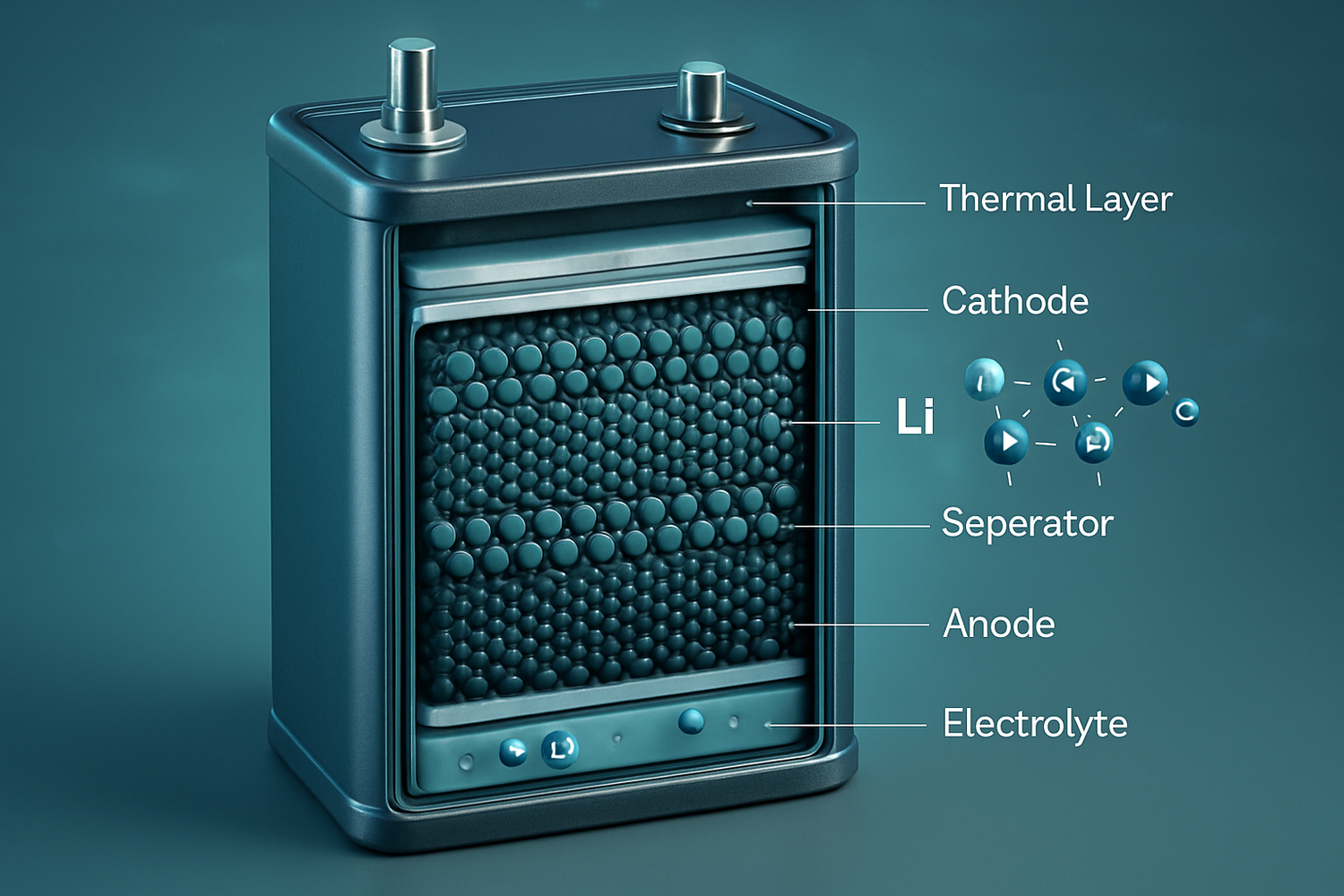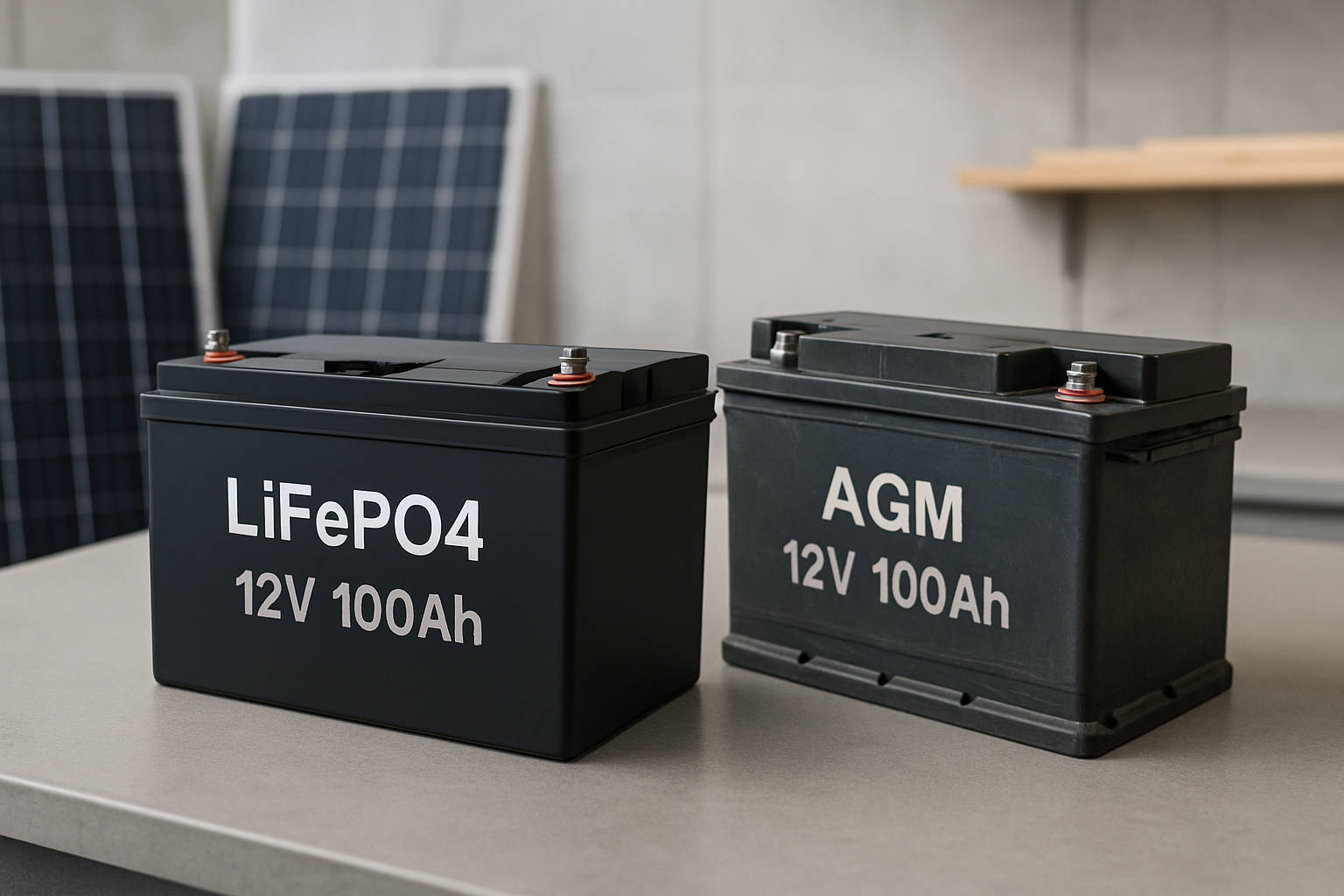Concerns about battery safety are common, especially with the term 'lithium' often associated with news of fires. Yet, not all lithium batteries are created equal. Lithium iron phosphate (LiFePO4) chemistry stands apart as a uniquely stable and safe option for energy storage. Understanding the science behind this technology is key to appreciating its reliability. This text will separate fiction from fact, addressing the most persistent myths surrounding 12V 100Ah LiFePO4 battery safety and providing clear, evidence-based information.
The Foundation of LiFePO4 Safety: Stable Chemistry
The safety profile of a LiFePO4 battery begins at the molecular level. Its inherent stability is not an add-on feature but a core characteristic of its chemical composition, setting it apart from other lithium-ion variants like Nickel Manganese Cobalt (NMC) or Nickel Cobalt Aluminum (NCA).
A Resilient Molecular Structure
LiFePO4 technology uses a phosphate-based cathode material. The atoms in its olivine crystal structure are held together by powerful covalent bonds. This structure is incredibly robust and resists breaking down even under significant stress, such as overcharging or physical damage. Unlike the metal oxides in other lithium batteries, the LiFePO4 structure does not easily release oxygen atoms, which are a key ingredient for combustion.
High Threshold for Thermal Runaway
Thermal runaway is a chain reaction where a battery cell overheats, causing a rapid and unstoppable temperature increase that can lead to fire. LiFePO4 batteries have a significant advantage here. Their thermal runaway threshold is around 270°C (518°F). This is substantially higher than many other lithium-ion chemistries, which can enter thermal runaway at temperatures as low as 150°C (302°F). This wider safety margin makes them far less susceptible to overheating.
Myth vs. Fact: Addressing Common LiFePO4 Concerns
Misinformation can create unnecessary apprehension. Let's tackle some of the most common myths about Lithium iron phosphate safety head-on with factual explanations.
Myth: 'All Lithium Batteries Are a Fire Hazard'
Fact: This is a dangerous oversimplification. Lumping all lithium chemistries together ignores critical differences in their stability and safety profiles. The International Energy Agency highlights the distinct characteristics of various battery types, including LFP and NMC, for different applications based on their performance and material composition. As noted in the IEA's The State of Energy Innovation report, the choice of chemistry has significant implications for the supply chain and performance. LiFePO4's chemical stability makes it one of the safest and most reliable options available for residential and off-grid energy storage.
Myth: 'A LiFePO4 Battery Can Easily Explode from Overcharging'
Fact: This is virtually impossible with a properly manufactured battery. Every modern 12V 100Ah LiFePO4 battery contains a sophisticated electronic component called a Battery Management System (BMS). The BMS acts as the battery's brain, constantly monitoring its state. It will automatically cut off the charging current if it detects over-voltage, preventing overcharging long before it becomes a hazard. It provides a multi-layered defense against user error or charger malfunction.
Myth: 'LiFePO4 Batteries Are Unsafe in Cold Weather'
Fact: This myth confuses performance with safety. While it's true that extreme cold can reduce a battery's efficiency and ability to take a charge, it does not make it unsafe. In fact, a quality BMS will add another layer of protection by preventing charging below freezing (0°C or 32°F) to protect the cells from damage. Some advanced models even include built-in heating elements to maintain optimal operating temperatures. The IEA has noted that while LFP performance can be reduced in cold climates, this is a known operational parameter, not a safety flaw.
The Unseen Guardian: Your Battery Management System (BMS)
The BMS is arguably the most critical component for ensuring LiFePO4 battery safety and longevity. It is an intelligent circuit board that manages all aspects of the battery's operation, providing a shield against potentially damaging conditions.
Core Safety Functions of a BMS
A high-quality BMS provides several layers of automated protection:
- Over-Voltage Protection: Stops charging when the battery is full to prevent cell damage.
- Under-Voltage Protection: Disconnects the load when the battery is nearly empty to prevent over-discharging.
- Over-Current Protection: Shuts down the battery if the discharge or charge current exceeds safe limits.
- Short-Circuit Protection: Instantly disconnects the battery circuit if a short is detected.
- Temperature Protection: Monitors cell temperature and prevents operation in extreme heat or cold.
Why the Quality of the BMS is Paramount
Two 12V 100Ah LiFePO4 batteries might look identical on the outside, but their safety and performance can vary dramatically based on the quality of their internal BMS. A superior BMS uses higher-grade components and more sophisticated software to provide precise and reliable protection. This is a key factor that differentiates premium batteries from low-cost alternatives and is essential for the long-term health of your energy storage system. As explained in the ultimate reference on solar storage performance, maintaining the battery within its ideal operational parameters is crucial for maximizing cycle life and ensuring safety.
Best Practices for Safe Handling and Operation
While LiFePO4 technology is inherently safe, following proper procedures ensures you get the maximum performance and lifespan from your investment. Your interaction with the battery is the final piece of the safety puzzle.
Secure Installation and Proper Ventilation
Always ensure your battery is securely mounted to prevent it from moving or vibrating excessively. Protect the terminals from accidental contact with metal objects that could cause a short circuit. While LiFePO4 batteries do not produce gas during normal operation like lead-acid batteries, providing adequate ventilation helps dissipate heat and keeps the battery operating at a stable temperature.
Use the Right Charging Equipment
Always use a charger specifically designed for LiFePO4 batteries. These chargers use a specific charging profile (CC/CV - Constant Current/Constant Voltage) that is optimized for the chemistry. Using a charger intended for lead-acid or other lithium chemistries can lead to improper charging and may even be flagged as a fault by the BMS. The International Renewable Energy Agency's Innovation Outlook on smart charging emphasizes how tailored charging strategies are vital for battery health across different applications.
A Final Word on LiFePO4 Confidence
The evidence is clear: the reputation of LiFePO4 as a safe and dependable energy storage technology is well-deserved. Its safety is rooted in a stable chemical foundation, reinforced by the intelligent protection of a high-quality BMS. By moving past outdated myths and understanding the facts, you can confidently adopt a 12V 100Ah LiFePO4 battery for your energy needs. This technology offers a reliable path toward energy independence, backed by science and robust engineering.
Frequently Asked Questions
Are LiFePO4 batteries safer than lead-acid batteries?
Yes, in several key ways. LiFePO4 batteries have a completely sealed design, which eliminates the risks of corrosive acid spills and the emission of explosive hydrogen gas during charging, both of which are concerns with traditional flooded lead-acid batteries. Furthermore, the integrated BMS provides sophisticated electronic protection that lead-acid batteries lack.
Can a 12V 100Ah LiFePO4 battery catch fire?
While no energy storage device has zero risk, it is exceptionally unlikely for a well-made LiFePO4 battery with a fully functional BMS. The chemistry is highly resistant to thermal runaway, which is the primary cause of fires in other types of lithium batteries. The vast majority of incidents are linked to manufacturing defects, severe physical damage, or the absence of a proper BMS.
What safety certifications should I look for?
To ensure a battery meets rigorous safety standards, look for certifications such as UL 1973 (for stationary and motive batteries), CE (Conformité Européenne), IEC 62619, and UN38.3 (for transportation). These certifications indicate that the battery has undergone extensive third-party testing for electrical, mechanical, and environmental safety.





Leave a comment
All comments are moderated before being published.
This site is protected by hCaptcha and the hCaptcha Privacy Policy and Terms of Service apply.